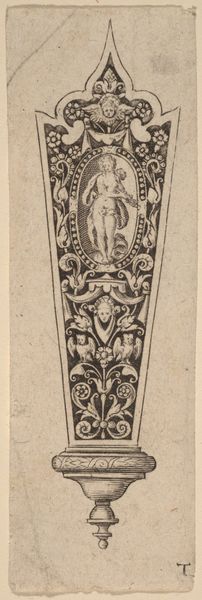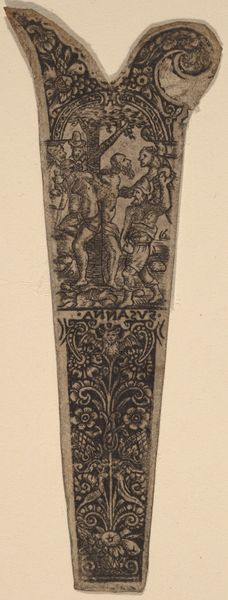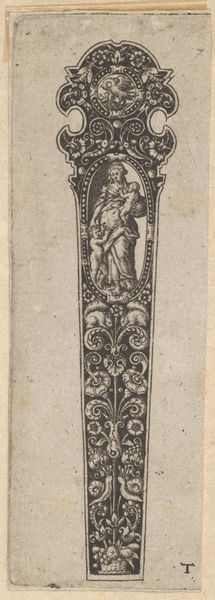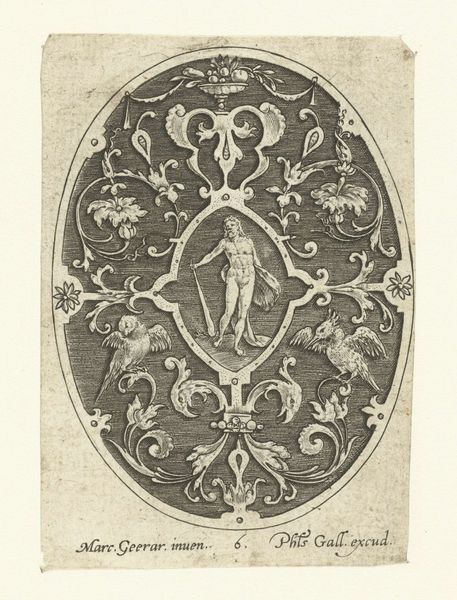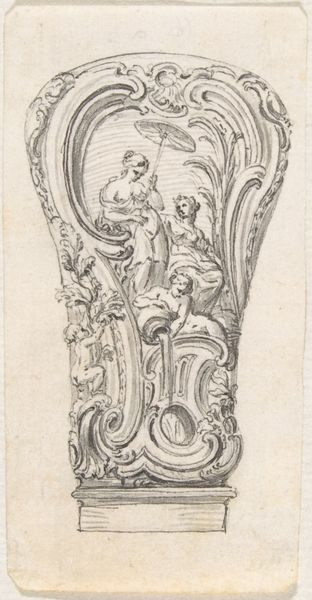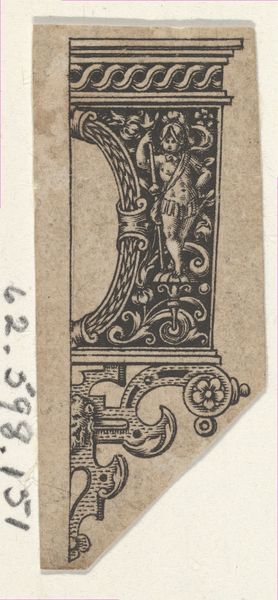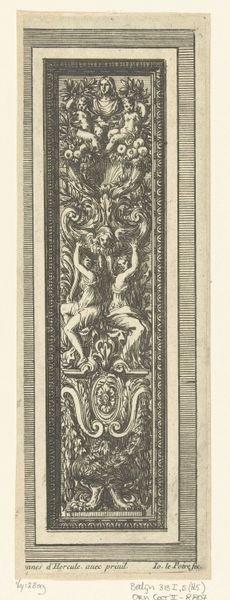
Design for a Knife Handle with the Personification of Prudence 1580 - 1600
0:00
0:00
drawing, print, engraving
#
portrait
#
drawing
#
allegory
# print
#
mannerism
#
figuration
#
decorative-art
#
engraving
Dimensions: Sheet: 3 7/16 × 7/8 in. (8.8 × 2.2 cm)
Copyright: Public Domain
Curator: Johann Theodor de Bry, working around 1580-1600, gave us this intricate design titled, "Design for a Knife Handle with the Personification of Prudence," an engraving meant to adorn what would otherwise be a utilitarian object. Editor: It’s incredibly ornate! My first thought is that it's trying a little too hard. I feel like I'm looking at a powerpoint slide that's jammed too much clip art onto one small graphic! It’s as if every inch had to shout about its artistry. Curator: Right, but consider the period! This piece showcases the Mannerist style, very fashionable at the time, characterized by complexity and sophistication. The emphasis was less on function and more on visually expressing status, displaying a patron’s erudition and access to luxury. The owls and classical figure evoke themes of wisdom. Editor: I get the historical context. But even so, is wisdom truly something you need on a knife handle? Isn’t a sharp blade enough? I'm probably missing the symbolic gestures; tell me more. Curator: Well, think about it as more than *just* a knife. This could have been a presentation piece. Knives then weren't just for eating; they were personal objects carried at all times. By embedding symbolism related to virtues like Prudence, one literally carries these ideas with you; one becomes prudent. Editor: Huh...a call to action. Like wearable self-improvement, almost. Like a talisman but make it fancy silverware. I do like how everything from the top heraldic-looking crest to the rabbits at the base feels meticulously balanced and thoughtfully placed, even with all that detail. Curator: Exactly! De Bry’s work often involved allegorical themes combined with practical design elements. This wasn't just art for art's sake. It was intended for a specific purpose, bridging the gap between fine art and functional design, expanding what the art market could encompass at the time. Engraving was the great information spreading method then! Editor: Looking closer, there is a captivating juxtaposition here between sharp intent – a knife after all is about cutting and dividing - versus this almost dizzying sense of ornamental unity. I didn’t fully appreciate that dialogue on the first glance. Curator: A design both embodying the object's nature *and* elevating its purpose through artistic form, very representative of the era's values. The detail involved surely required a collaborative shop that likely also served the commercial classes; it wasn't always an isolated master. Editor: I’m leaving with a whole new respect for over-the-top cutlery now. Curator: Well, that's Mannerism for you!
Comments
No comments
Be the first to comment and join the conversation on the ultimate creative platform.





